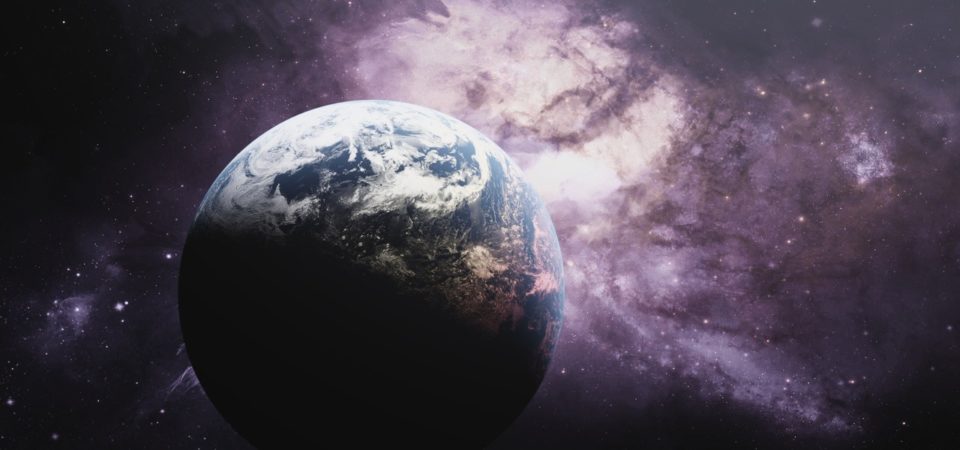This blog was first published at The Great Transition Initiative on May 23, 2023
Today, most of us humans suffer from a little-known disorder: severe temporal myopia.
We look out at the world and assume it has always been pretty much as we see it. At most, our sense of time is bounded by grandparents and grandchildren. We struggle to imagine life 100 years ago, let alone 20,000 or 20 million. We fail to see the myriad, interwoven ecological connections all around us forged over millennia. And we are wedded to the notion of stasis, envisioning our home places (and all other places) persisting virtually unchanged through time.
Does it really matter that we lack a meaningful sense of time? In a word, yes. Indeed, although unlikely to be recognized by any formal medical body, severe temporal myopia may prove to be humanity’s deadliest affliction.
We are players in a long-running cosmic drama. Yet we have forgotten our roles, and even the existence of the play itself. We fail to see the dynamism of the world, the way our local ecosystems continually adapt and evolve as conditions shift. So we are left unable to respond to the needs of our moment. To make matters worse, human-driven climate warming, habitat destruction, and biodiversity losses have greatly accelerated the pace of change, setting us on a path toward disaster.
Having successfully extricated ourselves from the grand narrative of which we are part, we exist in a world of resources, not relatives; commodities, not communities. No surprise then that we seek to counter the resulting separation and loneliness through an unending accumulation of stuff. Of course, any materialist quest for meaning is doomed to fail, ultimately leaving us unhappy and unfulfilled.
Science confirms that we have time to change course, to discover another, more regenerative pathway that aligns with (rather than battles against) the greater natural world. So, given our current eco-crisis, what role, if any, does Big History have in the Great Transition?
This moment calls for a fundamental shift in worldview. Rather than focusing on humanity’s distinction from, and superiority over, the natural world, we must learn from Indigenous cosmologies and other wisdom traditions, coming to see ourselves as deeply embedded within a natural world brimming with relatives. Here, then, is where Big History might play an outsized role.
Especially if taught in schools and universities (as Maria Montessori envisioned with her notion of “cosmic education”), Big History has the potential to blow out the temporal walls and re-place us within a meaningful universe. This story of everything—which goes by many names, among them the Great Story, the Immense Journey, the New Story, and the Epic of Evolution—is fundamental to understanding the special role we play at this pivotal moment. But how do we address the challenge of Big History’s abstractness?
The answer, I believe, is rooting the story of everything in nearby nature.
At first, it seems completely counterintuitive to convey the tale of galaxies, stars, and planets through the rocks, trees, and animals we encounter daily. After all, the former deal with the biggest scales of time and space whereas the latter are concerned with the present-day and the hyperlocal. Yet, strangely enough, only Westerners struggle with this juxtaposition. For most Indigenous peoples around the globe, the cosmic and the local are intimately interwoven. Their grand tales inevitably feature a range of community residents: the trickster coyote, the sacred mountain, and medicinal plants.
To date, Big History has largely been rooted in abstract science. But if conveyed through the denizens of our local communities, this cosmic narrative would cross the gap from head to heart, coming to life in ways truly meaningful to listeners. Our storytelling goal should be awe, triggering a sense of deep amazement that tends to break down human supremacy and generate feelings of belonging to a vast and mysterious whole. And awe is frequently catalyzed by direct experience. Entry points to this story surround us. That local hill is a gateway to talking about the birth of the solar system. The elder oak tree down the street is a distant relative who can help convey the amazing tale of life harnessing solar energy. And that singing robin in the backyard is an actual dinosaur, close kin of T. rex.
Imagine being raised in a world where every place and every creature has meaning, revealing reciprocal relationships shared with the web of life that supplies our water, air, and food. While this might sound fanciful, recall that an ecocentric worldview was likely dominant throughout most of the 300,000-year history of our species. We may well have a genetic predisposition to such stories of belonging that encompass nearby nature. In short, meaningful, place-based versions of Big History might serve as the conduit to take us back to a nature-centered worldview.
Importantly, Big History on its own is not a cultural cosmology. Rather, this science-based tale offers a foundation upon which an endless diversity of cosmologies can be constructed, each informed by specific cultural, historical, spiritual, and ecological contexts. And this Great Story must be conveyed as a saga not only of the past but also of the future. If we are to become good ancestors, we must understand, deeply, that our actions today will influence the unfolding of Earth’s immense journey for many millennia to come. Big History can help replace us into the flowing river of time, opening up possibilities for alternative, more hopeful futures.
 Scott Sampson is executive director of the California Academy of Sciences in San Francisco and author of How to Raise a Wild Child: The Art and Science of Falling in Love with Nature.
Scott Sampson is executive director of the California Academy of Sciences in San Francisco and author of How to Raise a Wild Child: The Art and Science of Falling in Love with Nature.
The MAHB Blog is a venture of the Millennium Alliance for Humanity and the Biosphere. Questions should be directed to joan@mahbonline.org
The views and opinions expressed through the MAHB Website are those of the contributing authors and do not necessarily reflect an official position of the MAHB. The MAHB aims to share a range of perspectives and welcomes the discussions that they prompt.
